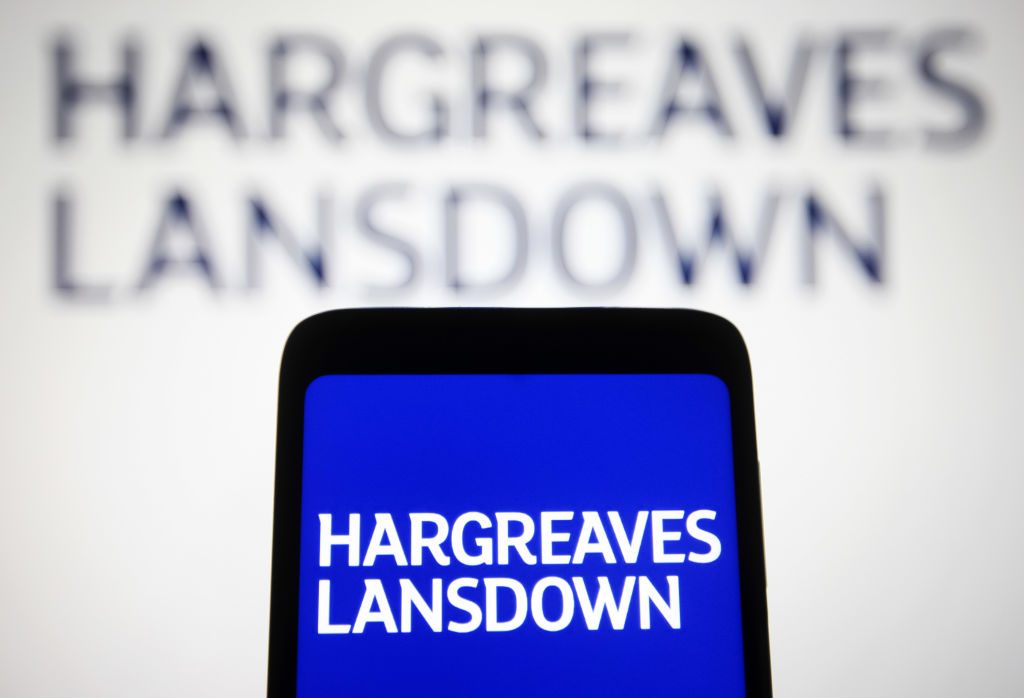Hargreaves Lansdown slashes fees for ISA and SIPP investors - how does it compare to other providers?
Hargreaves Lansdown, the UK’s biggest investment platform, has dropped its fees by 40%, to their lowest ever level, for certain customers. Is it a good deal, and how does it compare to other providers?


Hargreaves Lansdown has slashed its platform fee for early-bird investors opening a new stocks and shares ISA or self-invested personal pension (SIPP).
The annual charge will drop by 40%, from a maximum of 0.45% to 0.27%, for customers contributing or transferring in at least £10,000.
The special deal is available to those opening and funding an account between 15 April and 30 June 2025.
MoneyWeek
Subscribe to MoneyWeek today and get your first six magazine issues absolutely FREE

Sign up to Money Morning
Don't miss the latest investment and personal finances news, market analysis, plus money-saving tips with our free twice-daily newsletter
Don't miss the latest investment and personal finances news, market analysis, plus money-saving tips with our free twice-daily newsletter
In addition, the UK’s biggest investment platform has launched another offer, whereby customers setting up a new direct debit in a stocks and shares ISA or SIPP by 30 June 2025 will get their account fee back as cash.
Paul Dimambro, director of pensions, investments and ISAs at Hargreaves Lansdown, comments: “After a whirlwind couple of weeks with significant market shifts [thanks to president Trump’s tariffs] investors would be forgiven for forgetting a new tax year has started.
“That’s why we’ve launched two new offers, aimed at giving people an extra incentive to take the first steps towards their financial freedom.”
The special offers come at a time when other investment platforms are running pension and ISA transfer offers worth up to £5,000 in cashback to try and entice new customers.
But, the cheaper fee also comes as competitor Vanguard has hiked its charges with the introduction of a £4 monthly fee at the end of February.
We look in more detail at how the special offers work, and whether a 0.27% account fee makes Hargreaves Lansdown competitive.
How do the special deals work?
Investors opening a new Hargreaves Lansdown stocks and shares ISA or SIPP with £10,000 or more will benefit from a 40% discount off the platform fee for six months.
This means a 0.27% charge will be in place from 1 July 2025 to 31 December 2025 (capped at £2.25 a month for the ISA, or £10 a month for the SIPP). It will then revert back to 0.45% (capped at £3.75 for the ISA, and £16.67 for the SIPP).
However, customers that only invest in funds may pay an even cheaper fee. Fund investors with accounts worth less than £250,000 who meet the special offer criteria will pay the reduced fee of 0.27%, but those with larger portfolios will pay less.
Investors with accounts valued at between £250,000 to £999,999 will pay 0.15% (down from 0.25%). Those with between £1,000,000 and £1,999,999 will be charged 0.06% (down from 0.1%). Meanwhile, investors with more than £2 million in a fund account will continue to pay nothing.
Opening and contributing to the account must happen between 15 April and 30 June 2025, to get the cheaper deal.
The second offer is for early-bird regular savers setting up a new direct debit instruction between 15 April and 26 June 2025.
They will get their account charges of 0.45% returned to them as cashback. This will be paid into their Loyalty Bonus Accounts on 26 July 2026, on satisfying certain conditions.
These include that the direct debit must be at least £25 per month, and must be kept in place, for the same value or higher, for no less than 12 months.
How does Hargreaves Lansdown’s lower fee compare to its competitors?
A 40% discount sounds like a great deal, but Hargreaves Lansdown is known to be one of the more expensive platforms, so how does the lower charge shape up versus its rivals?
We asked the lang cat, a financial consultancy, to crunch the figures to see which platforms work out cheapest.
It says that for someone with a small £15,000 ISA portfolio invested in funds, Hargreaves Lansdown’s annual fee will drop from £68 to £54, thanks to the reduced charge for six of the 12 months.
A £54 platform fee makes it one of the cheapest platforms, according to lang cat’s analysis of 13 platforms.
Halifax Share Dealing is the cheapest, at £36. But HL comes in lower than Fidelity, Interactive Investor, Bestinvest and Charles Stanley Direct.
What about bigger portfolios? For an ISA worth £100,000, Hargreaves’s fee falls from £450 to £360, meaning it is no longer the most expensive for portfolios this size. Again, these HL charges reflect the reduced fee for six months.
It is now more comparable to some of its competitors, such as Bestinvest (£400) and Fidelity (£350).
However, Vanguard and Interactive Investor are much cheaper, at £150 and £144 respectively.
For an ISA investing purely in investment companies (rather than funds), HL’s fee is just £36 a year, regardless of the size of portfolio, because a monthly cap kicks in.
So, HL’s special offer makes the platform joint cheapest with Halifax Share Dealing out of the 13 analysed. In contrast, Vanguard charges £48 a year for an ISA worth £25,000 or £50,000; the cost rises as the portfolio gets bigger. AJ Bell’s fee is £38 or £42 depending on the amount invested.
At the other end of the scale, Bestinvest, Willis Owen and Close Brothers charge anywhere from £38 to more than £1,000 for the biggest portfolios.
Chris Bredin, a consultant at the lang cat, tells MoneyWeek: “While any reduction in price is welcomed to lower the cost of investing, it’s important to consider what the cost becomes after the offer period expires.
“An investment of £50k with Hargreaves Lansdown in funds, within an ISA is charged at 0.27% for the offer period – this increases to the regular rate of 0.45% when this expires.”
In terms of SIPPs, the analysis shows a similar picture. Someone opening a SIPP, contributing £100,000 and investing purely in funds will face an annual charge of £360 (down from the usual £450). This is cheaper than Barclays and Bestinvest (both £400), but more than Vanguard (£150) and Interactive Investor (£156).
A £100,000 SIPP investing only in investment companies would pay £160 a year (compared to the full cost of £200), making it the seventh cheapest of 13 platforms.
Bredin adds: “Investors need to take other factors into account when looking at how platforms compare on cost. The type of asset being invested in, how often you’re likely to trade, which wrappers you use are all examples that can affect pricing – alongside sums invested.
“Fees are only one part of the picture, of course. Things like how much help you need picking investments, your impression and trust levels of a brand are some of the many other factors that will drive what is a personal choice based on your own set of circumstances.”
Get the latest financial news, insights and expert analysis from our award-winning MoneyWeek team, to help you understand what really matters when it comes to your finances.

Ruth is an award-winning financial journalist with more than 15 years' experience of working on national newspapers, websites and specialist magazines.
She is passionate about helping people feel more confident about their finances. She was previously editor of Times Money Mentor, and prior to that was deputy Money editor at The Sunday Times.
A multi-award winning journalist, Ruth started her career on a pensions magazine at the FT Group, and has also worked at Money Observer and Money Advice Service.
Outside of work, she is a mum to two young children, while also serving as a magistrate and an NHS volunteer.
-
 Boost for over 100,000 families on Child Benefit as new HMRC payment system rolled out
Boost for over 100,000 families on Child Benefit as new HMRC payment system rolled outThousands of households will no longer have to pay the dreaded High Income Child Benefit Charge through self-assessment
-
 Are you being haunted by the ghost of Christmas past? How festive cutbacks could boost your long-term wealth
Are you being haunted by the ghost of Christmas past? How festive cutbacks could boost your long-term wealthThe average family spends around £1,000 over the Christmas season. Here’s how much you could have gained if you had invested some of the money instead.